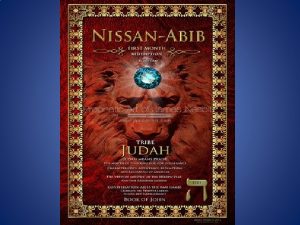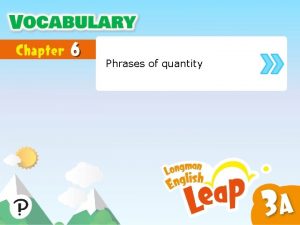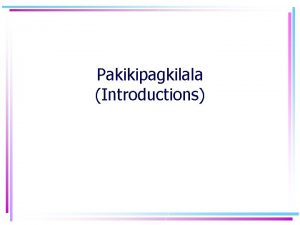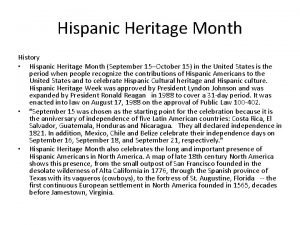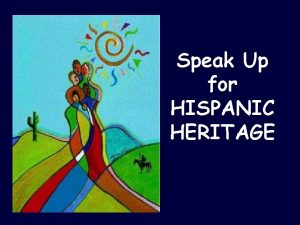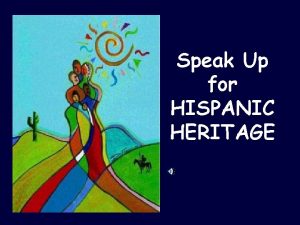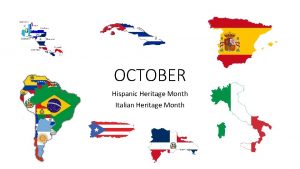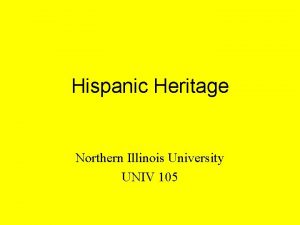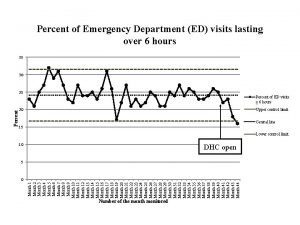Hispanic Heritage Month Today you will learn some








- Slides: 8

Hispanic Heritage Month Today you will learn some interesting facts about Mexico, Honduras and El Salvador.

Presenters • • • Reyna (Honduras) Edgar (Mexico) Yenmy (Mexico) Karina (Mexico) Diego (Mexico) Stephany (El Salvador)

Honduras • • • Interesting Facts Location: Honduras lies North of Nicaragua and south of the Caribbean Sea. It is the second largest country in Central America. It shares borders with Guatemala, El Salvador and Nicaragua and has over 600 km of coastline on the Carribbean Sea and on the Pacific Ocean. Land: Honduras is 80% mountainous, forested land that holds some of the ancient Mayan most treasured artifacts. • What’s Up “Que ondas” • . The largely mestizo population speaks Spanish, with English common on the northern coast and Bay Islands. Maya ruins at Copán, which represent the wealth of the past in what today is one of the region's poorest nations, help diversify the economy with tourist revenue. Although agricultural products are plentiful, mostly bananas and coffee, they have failed to enliven the economy of this tenuous democracy. ECONOMY • Industry: sugar, coffee, textiles, clothing.

Santa Ana Volcano

Map Of Honduras

Mexico Interesting Facts Land • Mexico city is the largest city in the world. • Mexico has many volcanoes located in the central Highlands region. Two volcanoes can be see from Mexico City. These are Popocatepeti and Ixtacihuati. Both of these are quiet, although Poppcatepeti • Food • Corn is the main food crop. It is grown on half of the cultivated land. The Indians living in what is now central or Southern Mexico ate corn from wild plants about 10, 000 years ago. About 5, 000 BC the Indians learned how to grow corn themselves. Corn is used • To make flat pancakes called tortillas. They are sometimes folded and stuffed with different foods to make tacos. • Agriculture: wheat, coffee, sugarcane, fruits, vegetables, tobacco, rism and livestock, industry oil, gold, food processing, textiles, tourism and fishing • Names • Mexican children are given both their father’s last name and their mother’s maiden name. This tradition helps preserve the heritage of both parents. • Population: 86, 740, 000 • Main Religion: Roman Catholic

Mexican Flag

El Salvador





